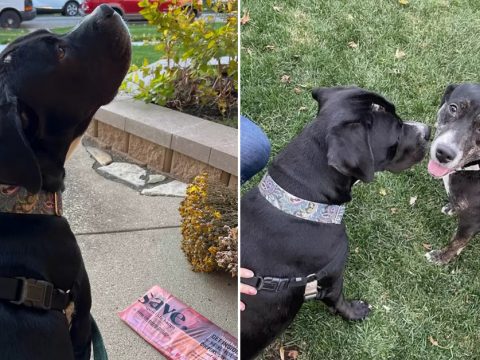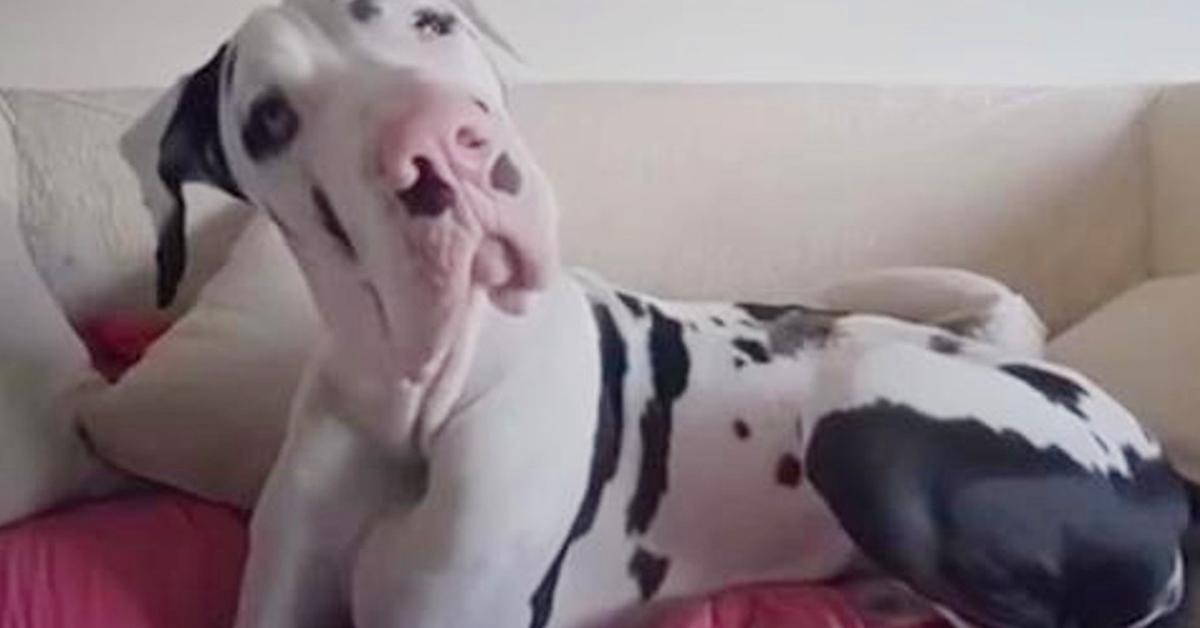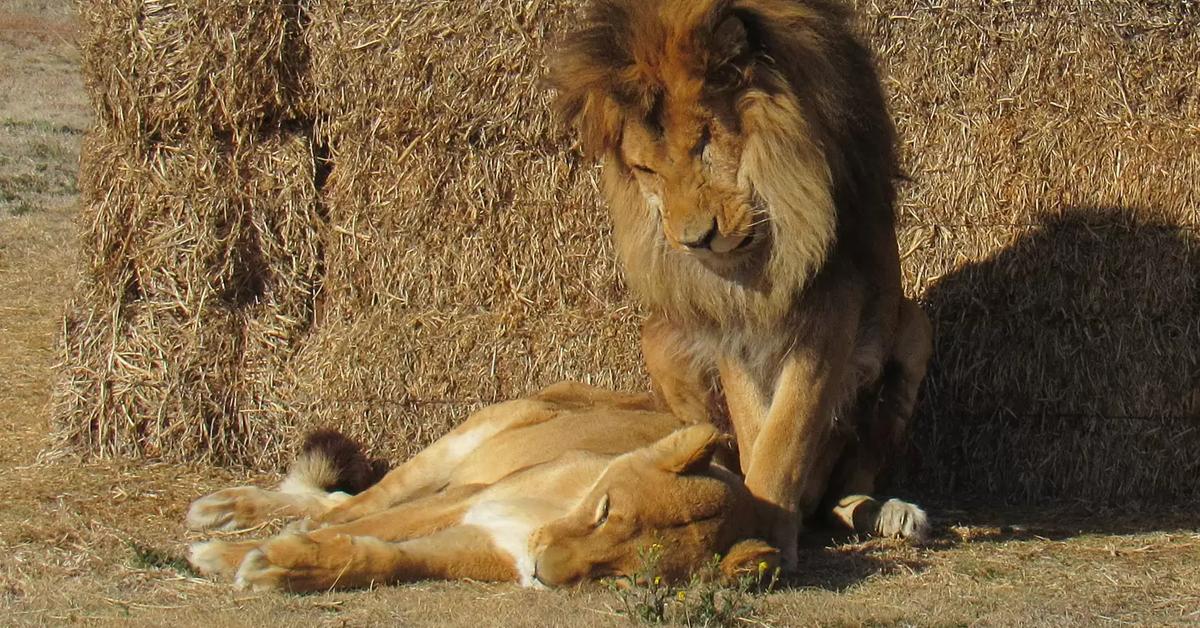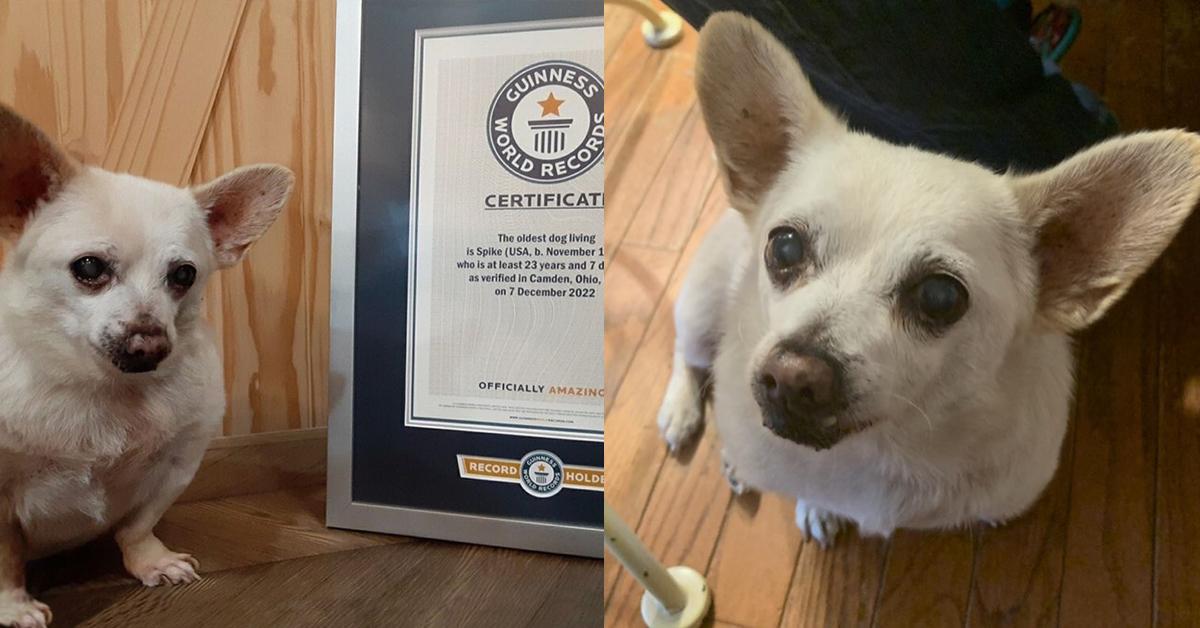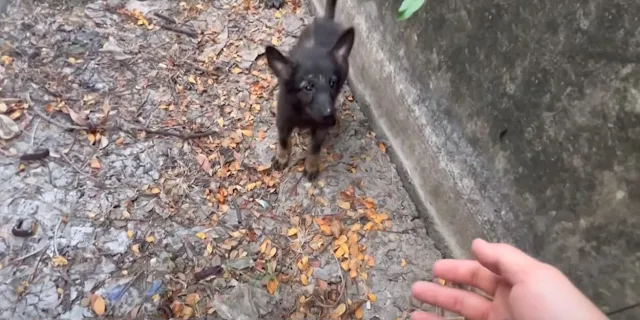Checking the color of your dog’s gums can give you an idea of their health. Healthy dog gums are powdery pink in color. When this color and other normal gum attributes change, such as moistness and temperature, it can mean that something is wrong and should be further examined by a veterinarian. A sick dog’s gum coloring could be blue, black, pale white, or bright red. Dog gums that aren’t pink can indicate problems ranging from gum disease to congestive heart failure. Here’s what various dog gum colors mean and other unhealthy gum issues to look for.
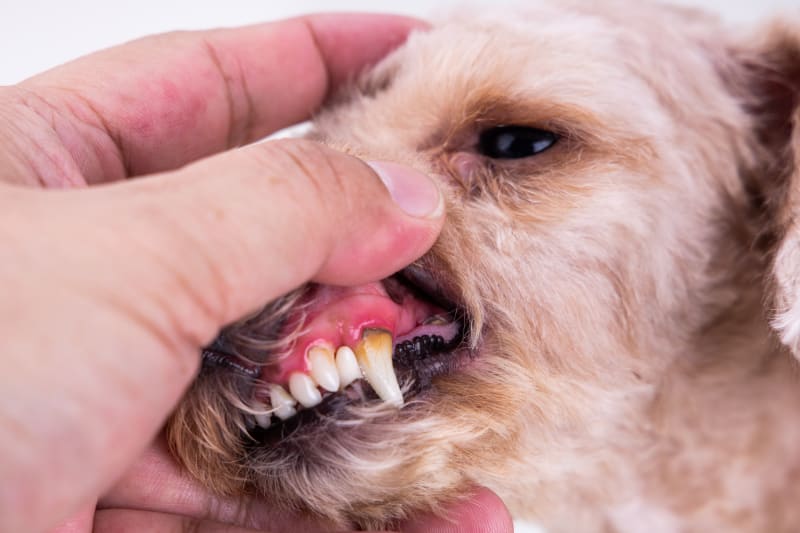
What Do Normal Dog Gums Look Like?
Normal gums should be a bubble gum pink color. When pressed with your index finger, the gums should lighten to a white or pale pink color and then quickly (within two seconds) return to the normal pink color when you take your finger off of the gums. The amount of time it takes for the gums to return to the normal pink color after you press on them is called the capillary refill time, or CRT. Gums should also be slippery or wet and smooth if you were to run your finger over them. They should not be sticky or dry.
Gum Problems in Dogs
-
- Blue Gums: If inadequate amounts of oxygen are being circulated through your dog’s blood supply, its gums may turn blue or purple.1 This gum color is referred to medically as cyanosis. Cyanosis can be caused by a variety of issues. Pneumonia, congestive heart failure, pulmonary thromboembolism, and other respiratory problems can cause this blue gum coloration if the condition is severe, because of a decrease in oxygenated blood. These conditions are all very serious.
- Pale Pink or White Gums: If a lack of blood or hemoglobin is present in a dog, then the gums may be pale pink or even white. This is most often a sign of anemia or acute blood loss.2 Many underlying diseases can cause anemia, and trauma can result in severe, acute blood loss. Because the body doesn’t have enough blood to circulate, the normal pink color fades. Conditions that cause anemia are very serious.
- Bright Red Gums: If your dog’s gums are very red or bright pink then it may mean they are overheated or has stomatitis or gingivitis. Dogs with heat stroke often present with bright red gums as they are panting in an attempt to cool their body temperature.3 Bright red gums are also a sign that there is inflammation in the gums or they are infected. Both of these periodontal problems can make the gums bleed more easily and can be painful.
- Growths on Gums: Oral tumors are commonly found on the gums of dogs. Sometimes these growths are benign or go away on their own, and other times they are cancerous or contagious. Pappilomatosis is a viral disease that is easily spread from dog to dog and results in pink, fleshy warts on the gums, along with other areas on the body.4 These are typically not as concerning as other types of growths or tumors. Other tumors can be cancerous and cause serious health concerns in a dog in addition to causing problems eating and pain.
- Bleeding Gums: Stomatitis, gingivitis and growths can often cause a dog’s gums to be very sensitive and prone to bleeding.5 If your dog has bleeding gums, he should be checked out by a veterinarian to assess the underlying cause.
Preventing Gum Problems in Dogs
Depending on the underlying reason for a gum problem, it may or may not be entirely preventable.
- Blue Gums: Diseases that inhibit proper breathing and oxygenation will cause blue gums but these diseases are often unavoidable. Be sure not to smoke around your dog and get veterinary treatment as soon as possible if your dog is having trouble breathing for any reason.
- Pale pink or White Gums: Acute blood loss and diseases that cause anemia should be addressed immediately to help prevent pale or white gums from developing.
- Bright Red Gums: Keeping your dog at a normal body temperature will help prevent bright red gums that are seen in an overheated dog. But if these red gums are due to stomatitis or gingivitis, regular dental care should be performed to prevent it from occurring.
- Growths on Gums: The occurrence of warts may be able to be decreased by limiting exposure to dogs who currently have these pink warts. If the growths are cancerous or another type of mass, there is no known way to completely prevent their occurrence.
- Bleeding Gums: If the gums are bleeding due to poor dental health, regularly brushing teeth and providing proper dental care is vital to maintaining healthy gums.
Treating Gum Problems in Dogs
The treatment plans vary for gum problems in dogs. For problems involving the gums that are related to respiratory conditions, immediate oxygen therapy is often necessary in addition to medications specific to the underlying condition. For pale pink or white gums, a dog may need a blood transfusion due to anemia or blood loss. If a growth is involved, surgery may be necessary to remove them from the gums. Dental care involving cleaning, tooth extraction, medications, and sometimes even cold therapy laser treatments may be necessary to address bleeding or bright red gums. Finally, if a dog is overheated and has bright red gums, cooling it down should address this.

-
Why does my dog have black gums?
It’s perfectly normal for your dog to have black patches on its gums. But if the discoloration is new, or accompanied by terrible breath, it’s time to bring your dog to the vet.
-
What do dehydrated dog gums look like?
Dry, pale, or tacky gums could indicate dehydration in a dog. If this is happening, you need to call your vet.
-
Why are my dog’s gums bleeding when brushing?
A number of conditions can make your dog’s gums bleed when you brush their teeth. It could be gingivitis, it could be a sign of something much more serious. To figure out the reason, you must call your vet.
Swollen Gums in Dogs
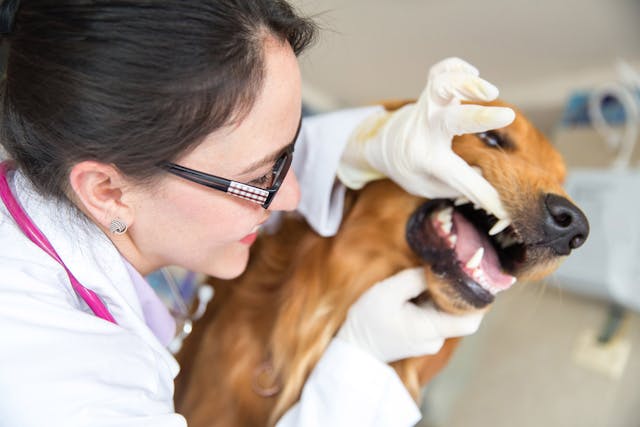
What are Swollen Gums?
The condition of your dog’s gums has an important impact on the overall health of your pet. Red, swollen gums can be an indication of gingivitis, which is an inflammation signalling early dental disease. Although your pet may not show signs of discomfort, plaque and tartar on the teeth and at the gum line will cause redness and pain. Gingivitis can lead to complications with organs such as the heart and liver due to toxins and bacteria entering the bloodstream, and will lead to further periodontal tissue damage.
Inflammation and redness in canine gingiva can be clinically diagnosed as gingivitis. Gingivitis is a painful condition which develops when plaque and calculus continually build up on the tooth, leading to bacteria forming on the gum line. Veterinary care is necessary to prevent additional oral damage.
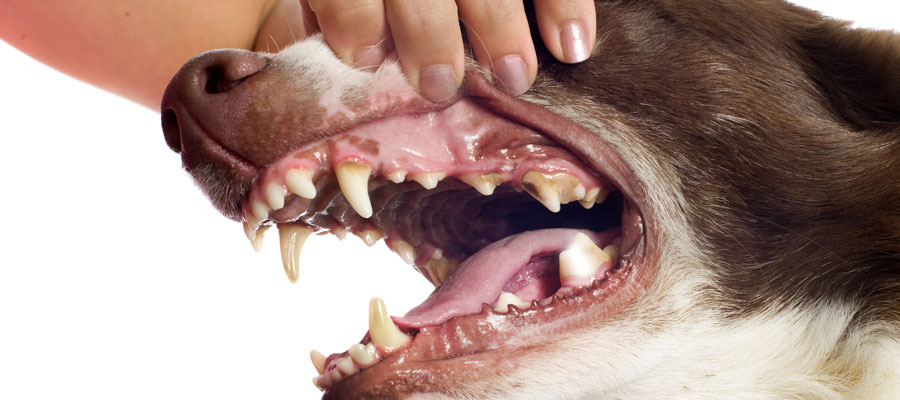
Symptoms of Swollen Gums in Dogs
Over 80 percent of dogs over the age of three have gingivitis. Toy breeds are especially susceptible due to the closeness and smallness of their teeth, and may begin to suffer from swollen gums at an early age. If your pet has swollen gums, check for redness and the beginning of a recession from the teeth. Bad breath is also an indication of a dental issue.
Types
Early Gingivitis:
- Plaque and calculus (tartar) are evident on the teeth
- There is a mild redness of the gums
- Though swollen, the gums are still providing a seal around the teeth.
Moderate Gingivitis:
- The plaque and calculus are now evident under the gum surfaces
- Halitosis (bad breath) is present
- The gums are more inflamed.
Advanced Gingivitis:
- The gums are very swollen with evidence of bleeding
- A recession of the gums has begun, with pockets forming which allow for bacteria to enter under the gum
- The bad breath will now be more odorous.

Causes of Swollen Gums in Dogs
Swollen gums in a pet can be caused by the following:
- Bacteria forms when the plaque on a dog’s teeth is not removed regularly with brushing
- Minerals in the saliva harden the plaque, which then forms as tartar
- As the plaque and tartar accumulate, the gums begin to recede.
Diagnosis of Swollen Gums in Dogs
Upon scheduling an appointment, the veterinarian will view your dog’s teeth and gums at each check up. If you suspect a dental issue with your pet, do not wait for the annual visit to have the problem looked at. Dental disease can progress rapidly.
When discussing the swollen gums with your veterinarian, you will be asked for a brief history of the time leading up to the problem. Your veterinarian will ask what type of food you feed your pet, and will want to know when you first noticed the bad breath and redness in the gums. If you have noticed any behavioral changes in your dog, be sure to advise the veterinarian.
She will perform a visual exam of your dog’s mouth and will point out to you the problem areas where gum recession may be present. She will check for abscesses of the teeth and will perform a palpation of the neck and glands to rule out swelling or lumps.
If infection is present, antibiotics will be prescribed to prepare the mouth for a dental cleaning. Blood work will be ordered to confirm that your dog does not have an underlying problem that should be addressed before the dental appointment is made.
Treatment of Swollen Gums in Dogs
Treatment in the form of a thorough teeth and gum cleaning under general anesthesia is the solution for the resolution of this common canine problem.
Your pet will be carefully monitored during the dental procedure. Protocol for oral care under anesthesia includes utilizing machines such as an electrocardiograph to monitor the heart.
Once your pet has been put under the anesthesia, x-rays will be taken to identify specific problem areas not visible to the eye. If your veterinarian has found a tooth that needs to be removed due to fracture, abscess or gum disease, this will be done at this time. Once necessary extractions have been completed, the veterinarian will remove all calculus, and scale and polish the teeth.
The length of time required for the cleaning will depend upon whether there is a need for extractions. Once the cleaning has been completed, your dog will wake up, while being kept warm and comfortable in order to limit stress.
If your dog was experiencing pain as a result of the need for dental care, the pain will be relieved. Your veterinarian will determine if medication should be prescribed for a few days, in order to keep your pet comfortable as the mouth heals. All of the procedures that have taken place, along with the medication prescribed, will be noted in your dog’s medical chart.

Recovery of Swollen Gums in Dogs
Recovery should be straightforward and without complication. Your veterinarian may recommend softening your pet’s food for a day or two due to sensitivity of the gums.
The best way to avoid the recurrence of swollen gums and further dental problems is with daily oral care for your pet. Your veterinarian can instruct you in proper brushing techniques and advise on the best toothbrush and toothpaste to use. A finger brush is also an excellent tool for cleaning your dog’s teeth. While starting a regular brushing routine is easiest when your pet is young, mature dogs will adapt and cooperate if you begin gently and slowly, brushing a few teeth at a time with water, gradually working your way up to the entire mouth being brushed with a veterinary toothpaste. Starting a tooth brushing regime should be done under the advice of your veterinary team, as it can be painful if dental disease is present.
Good quality dry food is important for your dog’s dental health. Chew treats can be effective in removing plaque; your veterinarian will be able to recommend the best product.
Excellent oral health is possible for your pet. Consistent daily care, along with regular annual check ups, will ensure your pet has a clean, healthy mouth.
Cost of Swollen Gums in Dogs
Proper oral hygiene is important for anyone, including our furry friends. However, swollen gums can be a result of an underlying issue. The first thing the veterinarian may do is give your dog a good teeth and gum cleaning. With the required blood work it can cost $300 on average. The veterinarian will also need to use general anesthesia. While your dog is under the anesthesia, the veterinarian will take X-rays to get a better look at what is causing the swollen gums. These X-rays cost around $150. Once the veterinarian is able to access the X-ray scans, it may be determined that the underlying cause is a bad tooth. This means the veterinarian will need to do an extraction that can cost between $110 and $185. Finally, once all is said and done your dog will be taken off the anesthesia and given pain medication, an estimated cost of $85, to ease the healing process. The veterinarian will also prescribe an antibiotic to combat infection. A week supply of antibiotics can cost $30-$72 depending on the brand and amount.













